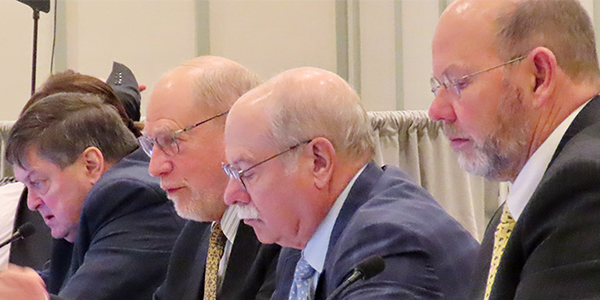Despite lower-than-expected revenue to date, NERC told Pandemic Provides Travel Savings for NERC, REs.)
NERC is required to file the variance report with FERC every quarter to alert the commission to any differences of more than $500,000 between actual and planned spending for the year to date in any revenue or expense categories. In addition to filing with FERC, the report will be reviewed by NERC’s Finance and Audit Committee at its meeting Wednesday.
Big Savings in 2020 Travel
For the first two quarters of 2020, NERC’s actual income came to $40.9 million, compared to the $41 million in its 2020 business plan and budget. Four revenue and expense categories were under budget by more than $500,000:
- Meetings and travel: currently $927,020 under budget (55.8%), expected to end the year $2.4 million under budget because of pandemic-related cancellations of in-person meetings and travel reductions.
- Consultants and contracts: currently $560,730 under budget (9%) because of “timing of expenditures.” Increased spending on contract labor in the Electricity Information Sharing and Analysis Center (E-ISAC) for the rest of the year is expected to bring this category to $27,073 under budget (0.2%) by year-end.
- Office costs, professional and miscellaneous expenses: currently $678,338 under budget (11.6%), expected to be $370,868 (3.2%) over budget by year-end because of higher software license and maintenance costs, as well as support and maintenance costs for leased equipment.
- Fixed asset additions: currently $1.6 million under budget (67.3%) but expected to end the year $2.2 million over budget because of “unbudgeted costs for the Secure Evidence Locker project” (part of NERC’s Align software project).
In addition, the Personnel category is expected to be $1.7 million under budget by the end of 2020 (3.7%) because the organization deferred hiring for 11 open positions to 2021. The planned use of contract labor for E-ISAC positions that were budgeted for full-time employee equivalents contributed to the underrun in this category as well.
Net financing activity is also projected to be $1.7 million under budget at year-end, though this is because of NERC’s decision to fund the Align project — which was not originally included in the organization’s 2020 budget — with a $2 million credit facility along with $1.8 million from NERC’s operating contingency reserves (OCRs). (See FERC Approves NERC’s Align Spending Request.)
“The 2020 budget anticipated that NERC would pay off more in principal than it would receive in loan proceeds, but … NERC is [now] projected to receive more in loans than it will pay off in principal,” the organization said.
Return to Normalcy Planned for 2022
In addition to the pandemic’s short-term cost impacts, NERC and the regional entities have signaled in their upcoming budgets that they expect long tails from the pandemic. NERC’s 2021 business plan and budget makes cost control a priority, with the goal of keeping its assessment flat from the prior year in response to economic uncertainty among the electric industry and load-serving entities. (See NERC Aims for Cost Control in 2021 Budget.)
The organization has already warned registered entities that its pandemic-related cost controls will need to be offset by budget increases in later years, with rises of 5% planned for both 2022 and 2023. (See NERC: Post-COVID Budget Rises Likely.) NERC described the post-2021 budget projections as a “measured return” to pre-pandemic planning assessments that also reflected the cost of deferring hires and other investments.
NERC’s projected 2020 budget surplus has already attracted interest from industry stakeholders, with the Canadian Electricity Association suggesting that the organization use the resulting higher-than-expected OCRs to provide additional relief to registered entities. In response, the ERO pointed out that OCRs are already being used to fund development costs for Align, and it preferred to keep the rest in reserve in case additional unexpected spending is required.




